Astounding Facts About Killer Whales You Would Love To Know
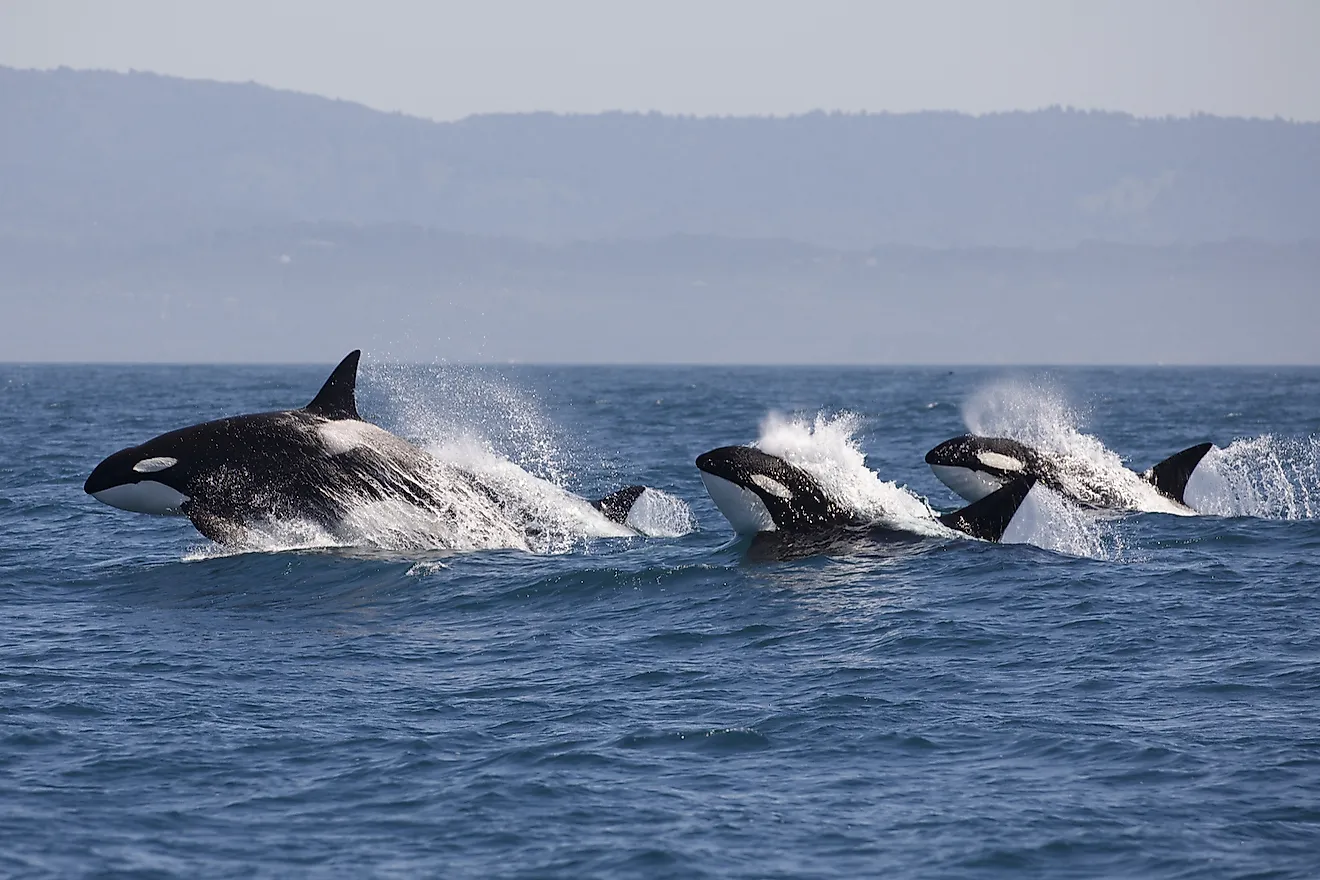
- Killer whales, or orcas, are the largest species of dolphin.
- The killer whale can weigh up to six tons. Adult killer whales can be 23 to 32 feet long, about the size of a school bus.
- Despite seeming like identical creatures with their notable black and white bodies, each individual orca is unique and identifiable by its dorsal fin and the saddle patch
- As social animals, orcas rely on a system of communication tools to talk with members of their pods, navigate the ocean, and hunt.
Killer whales - or orcas - are one of the most powerful predators in the world, stalking the ocean with their distinctive black-and-white color and using a variety of sounds and echolocation to hunt and communicate with other members of their pods. Their carnivorous diets are diverse and range from fish and penguins to seals, sea lions and whales, as well as fish, squid, and seabirds - up to 227 kg per day.
The mammals can get as large as 9,000 kilograms (males - females tend to top out around 5,500 kg) and range in length from 8.5 metres (females) to 9.8 m (males). They are quick swimmers for their size, reaching top speeds of 48 km/h. In the wild, they tend to live for 50 to 90 years.
Orcas have been around for six million years and can be found in every ocean except the Black Sea and Baltic Sea, from cold, coastal waters in polar regions to warmer seas near the equator. They are very intelligent, social mammals and it's these behavioural traits that make them a huge part of marine entertainment.
Here are some interesting and little-known facts about the killer whale.
10. They swim up to 40 miles per day
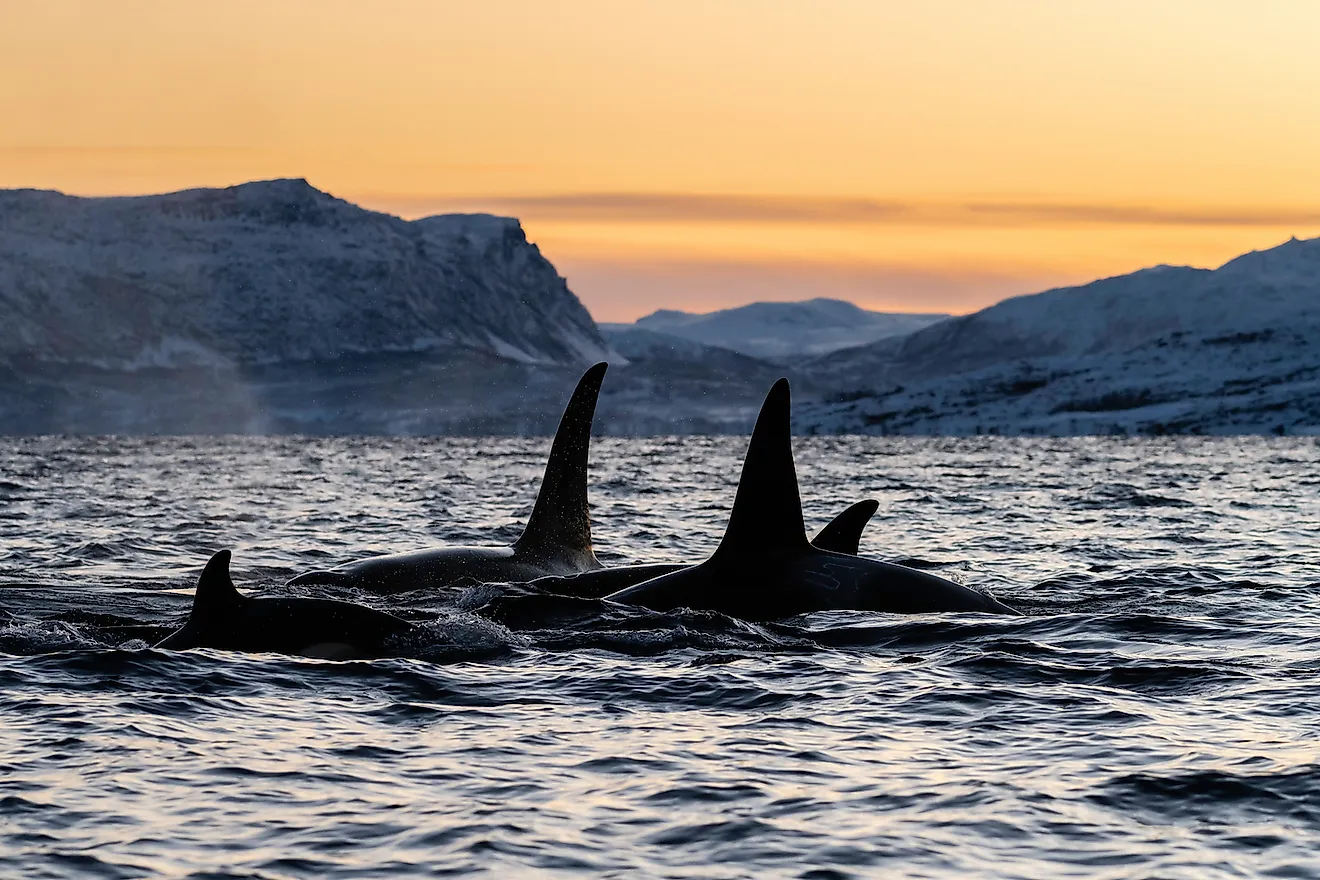
Orcas have evolved to swim as far as 40 miles in one day to forage for food, exercise, and socialize. In addition to swimming, killer whales will dive several times per day to depths of 100 to 500 feet below the water's surface. They are naturally inclined to travel far and dive deep, which is part of the reason killer whales often struggle in captivity, where tanks can't grant the same range and the mammals sometimes develop boredom and stress due to repetitive activities.
9. They are protective of their young
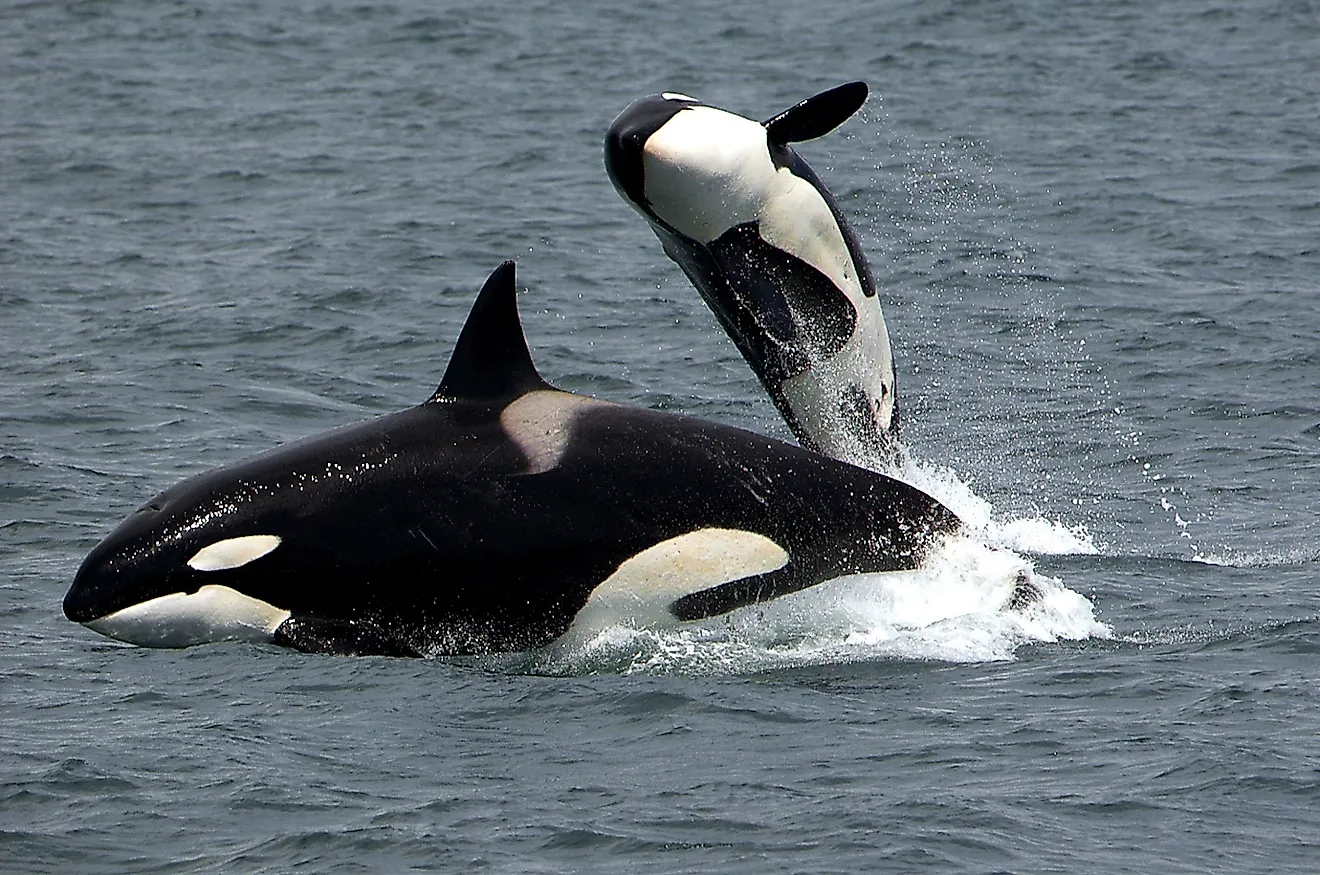
Mothers carry their babies in utero for a 17-month gestation period, and they give birth every three to 10 years until becoming menopausal around age 40. They are exceptionally protective of their offspring, and often adolescent females are recruited to assist in caring for calves. Mothers will nurse their babies for up to two years, forming a bond so strong that if a mother dies, the mortality rate of her sons increases. Orcas are some of the affected mammals in the ocean due to pollution, and the contaminants make their way into breastmilk, increasing the mortality rate of all young to 50% within the first year.
8. They hunt in pods
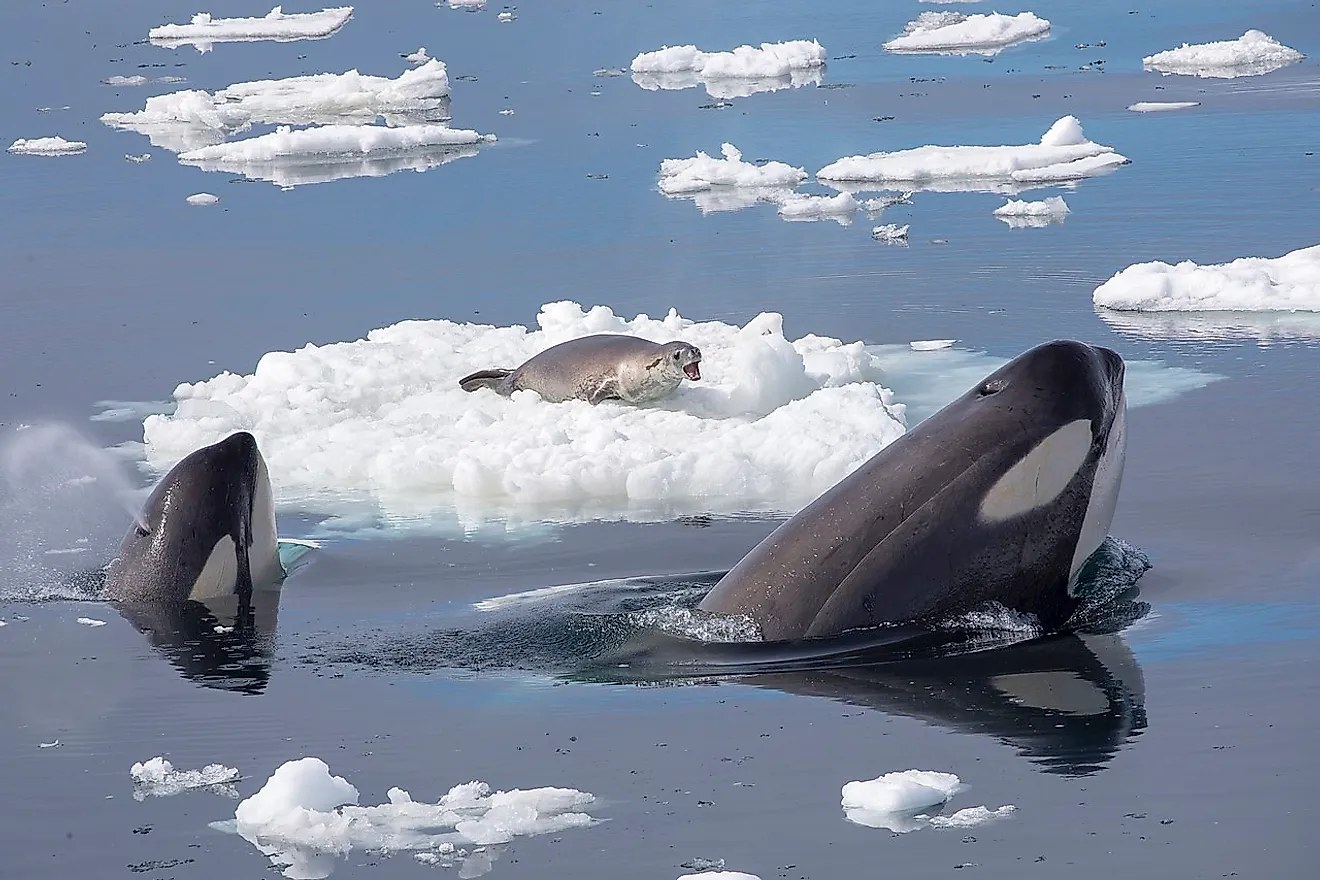
Killer whales hunt in pods, similar to a wolf pack, which is how they earned the moniker "wolves of the sea." A pod is a family group of up to 40 individual orcas and they prey on a variety on animals, using different techniques to capture them. While resident pods will focus on fish, transient pods are typically on the hunt for larger marine mammals.
Orcas work cooperatively to herd fish into a compact area where they're easier to consume. If they're after penguins, sea lions, or other animals on the surface, the killer whales will slap their tails on the water, creating a large wave that sends their prey off ice floes and within reach. Pods of orcas can take down something as large as a blue whale by surrounding it, then chasing and biting at the mammal until it weakens enough to be ripped apart and eaten.
As social creatures, orcas value sharing their hunt and females will share all the fish they catch with their offspring. Males, however, will only give away about 15% of their catch, typically shared with their mothers.
7. Their coloring is camouflage
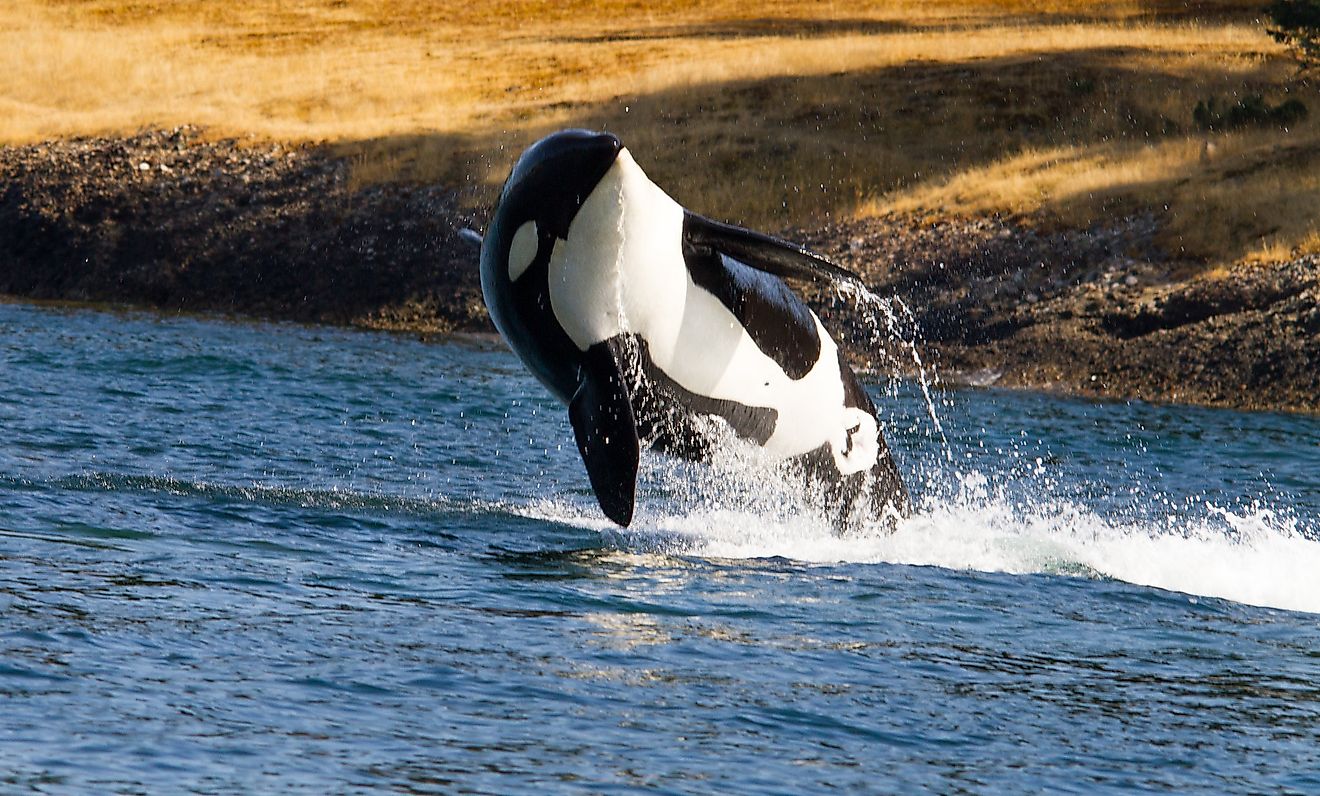
The distinct black-and-white patterning of the orca - back body, white underside, white patches above and behind the eyes, and a saddle patch behind the dorsal fin - serves a unique purpose. Creatures looking down on the killer whale, from a perch like an ice floe, may not see it because the black back will blend in with dark ocean waters. The white belly can camouflage into light streaming from the sky toward the sea, which also makes the orca difficult to pick out from beneath. The effect allows killer whales to sneak up on unsuspecting prey.
6. They're actually dolphins
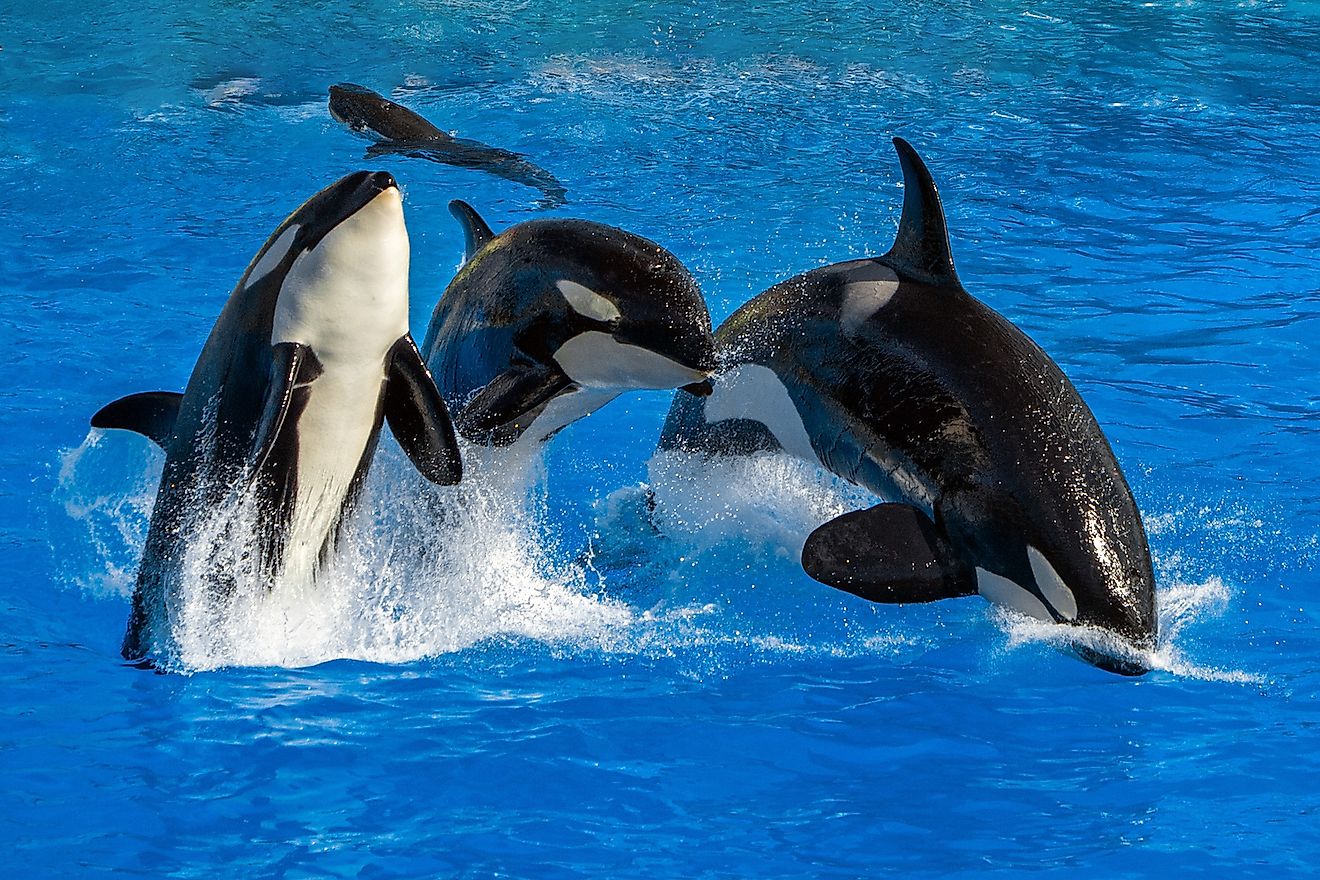
Orcas were named killer whales by ancient sailors, who observed pods of the mammal hunting down prey and taking out larger whales at sea. They were often called "whale killer," which eventually became "killer whale." However, the orca is not a whale at all, but is actually part of the dolphin family, Delphinidae. They are the only species in their specific genus, but are most closely related to dolphins from Australia and South East Asia.
5. They remain conscious while sleeping
Killer whales do not possess the same breathing reflex as humans, which allows the body to continue breathing automatically when sleeping or unconscious. The orca, like other cetaceans, must remain conscious while resting, because they must actively decide when to breathe, and slipping into a deep sleep would result in suffocation or drowning.
To stay alert, orcas only sleep with half of their brains at a time while the other half continues breathing and stays on alert for environmental dangers. When the right side of the brain sleeps, the left eye will close and vice versa, in a technique referred to as unihemispheric sleep. During periods of sleep, the orca will swim very slowly, close to the surface.
4. They have no predators
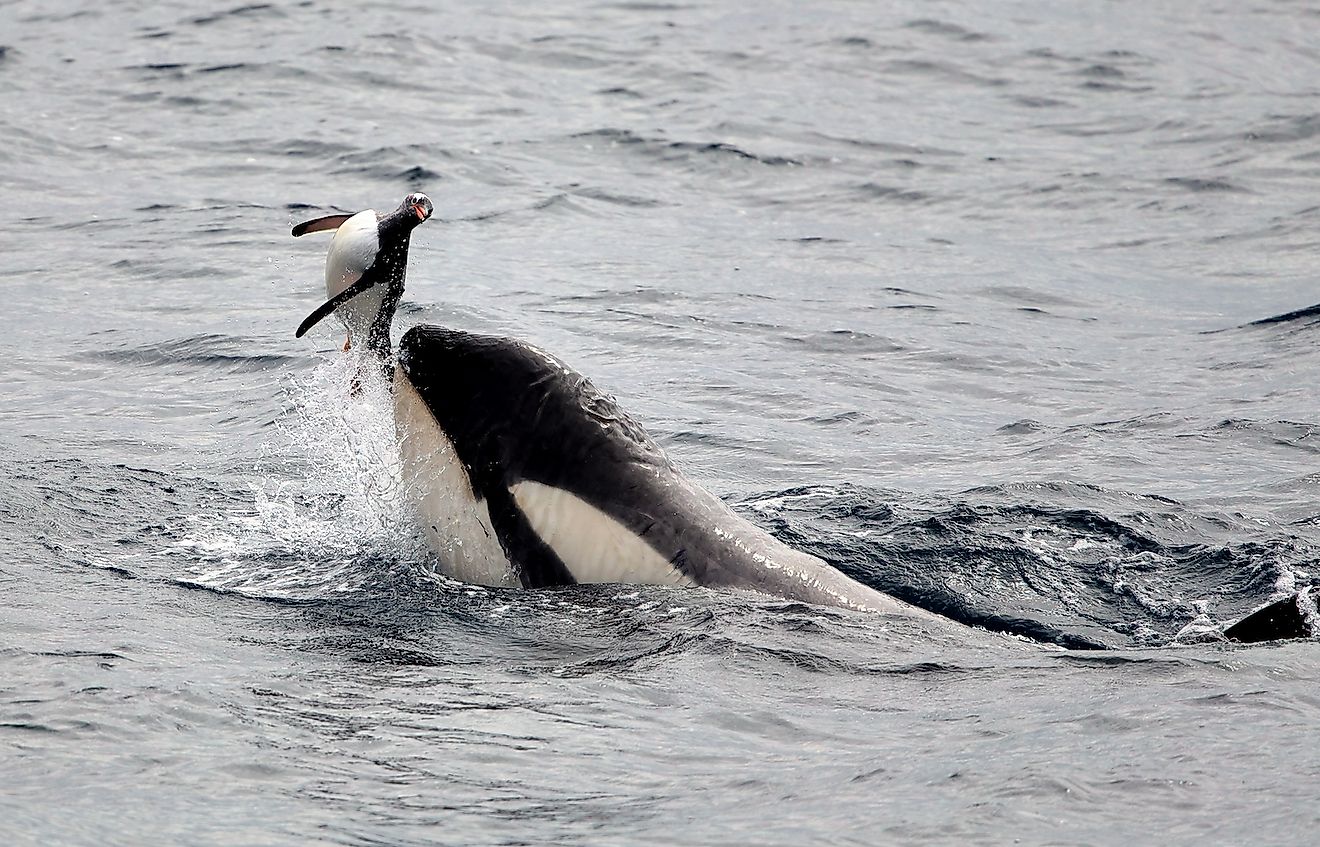
The orca is an apex predator, meaning it's at the top of its food chain and has no immediate threat as one of the largest and most powerful aquatic animals. However, the species is still threatened by environmental concerns, such as fishing equipment discarded or lost at sea like nets that pose entanglement dangers, chemicals that don't break down in nature and become stored in the fatty tissue of the orcas when they digest contaminated food, and shock waves from underwater explosives or military sonar that can cause orca blood vessels to burst and hemorrhage.
3. They have several modes of communication
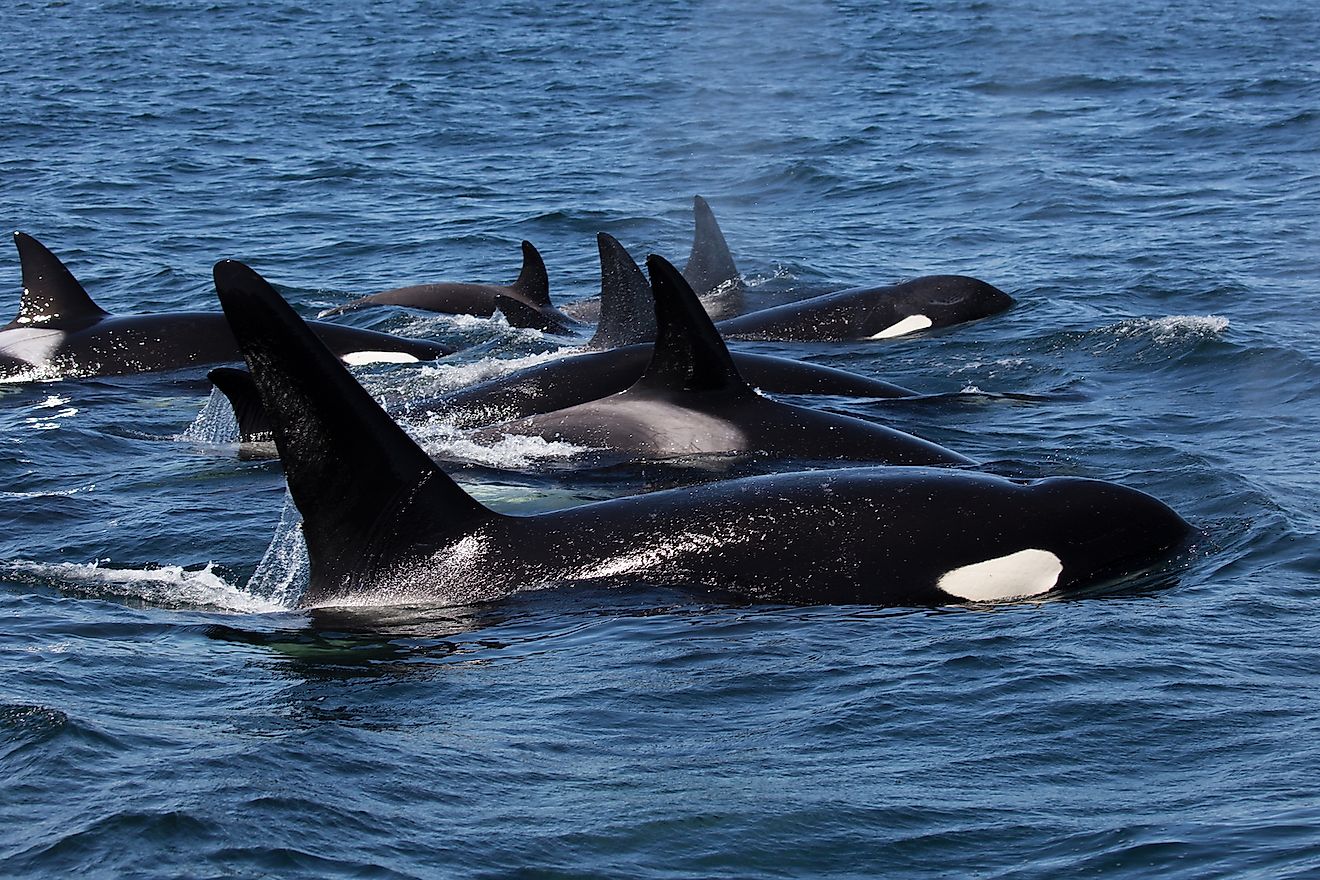
As social animals, orcas rely on a system of communication tools to talk with members of their pods, navigate the ocean, and hunt. On the surface, they use body language like breaching, slapping their flippers or tail, or bringing their head out of the water. Each population of killer whales has its own unique language, developed over millions of years, and made up of a series of whistles, clicks, pulsed calls, low-frequency pops, and jaw claps made by forcing air through the nasal passages and amplifying the sound through the fatty area of their heads, commonly referred to as the melon. When receiving sound, the orca uses its jaw - sound waves from echolocution travel from the jaw to the inner ear and then to the brain, where a detailed image is created. Their echolocution is considered the most powerful and most sophisticated of any animal.
2. Their social status matters
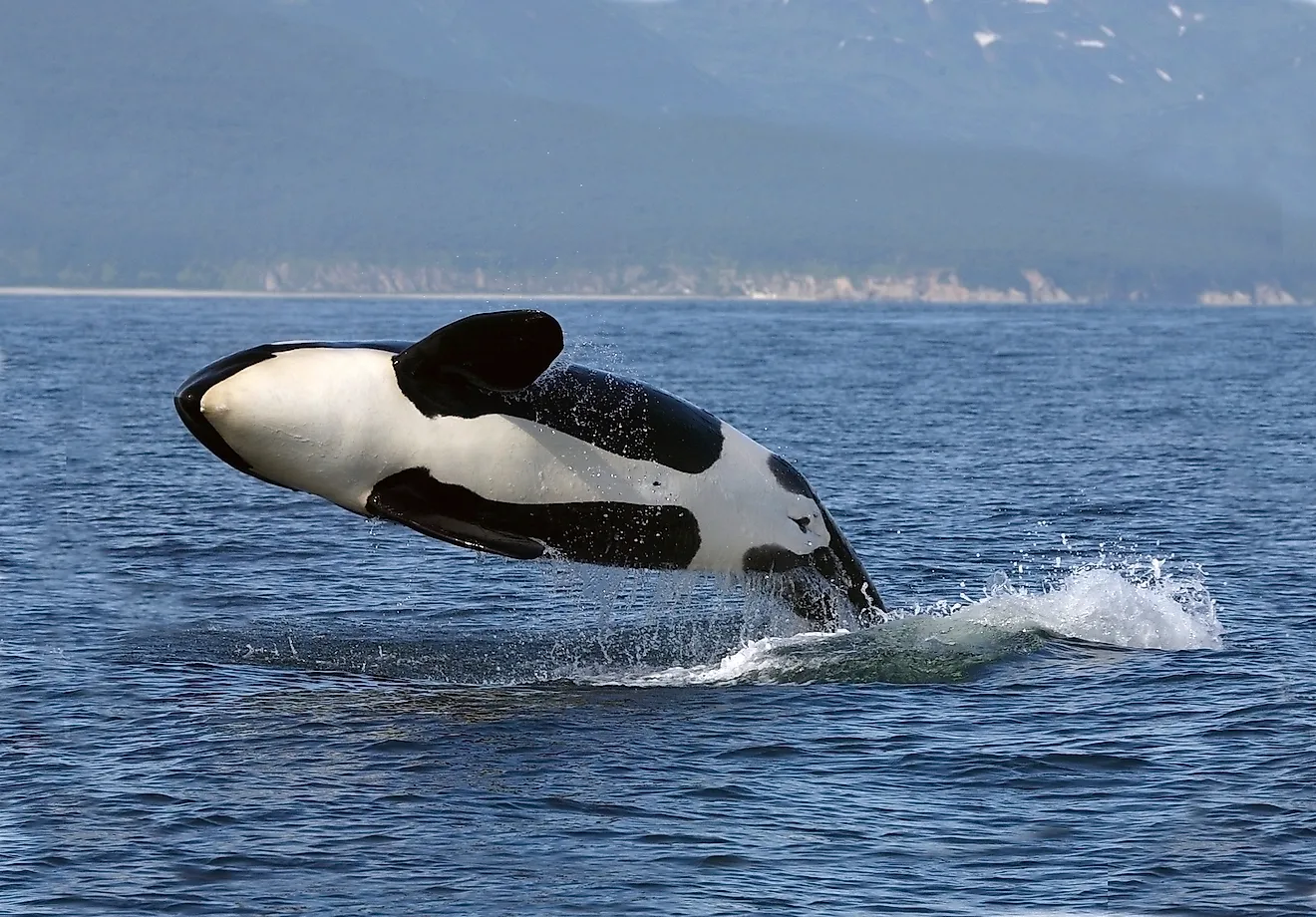
In fact, the social status of a killer whale could be a matter of life and death - particularly for males living off the Pacific coast of North America, where populations of Chinook salmon dip lower due to fluctuations in temperature due to El Niño and the fishing industry. Males who are nearer to the centre of the social framework of the pod have a mortality rate 67% lower than those on the social sidelines, who are not as connected and may not know where salmon are located or may be excluded from sharing of prey. These males are more likely to starve when times are tough. However, females do not suffer the same fate no matter what their social status.
1. They're not identical
Despite seeming like identical creatures with their notable black and white bodies, each individual orca is unique and identifiable by its dorsal fin and the saddle patch. Saddle patches are light-colored areas located behind the dorsal fin, and they can be open or closed, often white or grey, and each orca's saddle patch has a distinct shape, making it possible to tell the difference between individuals.











